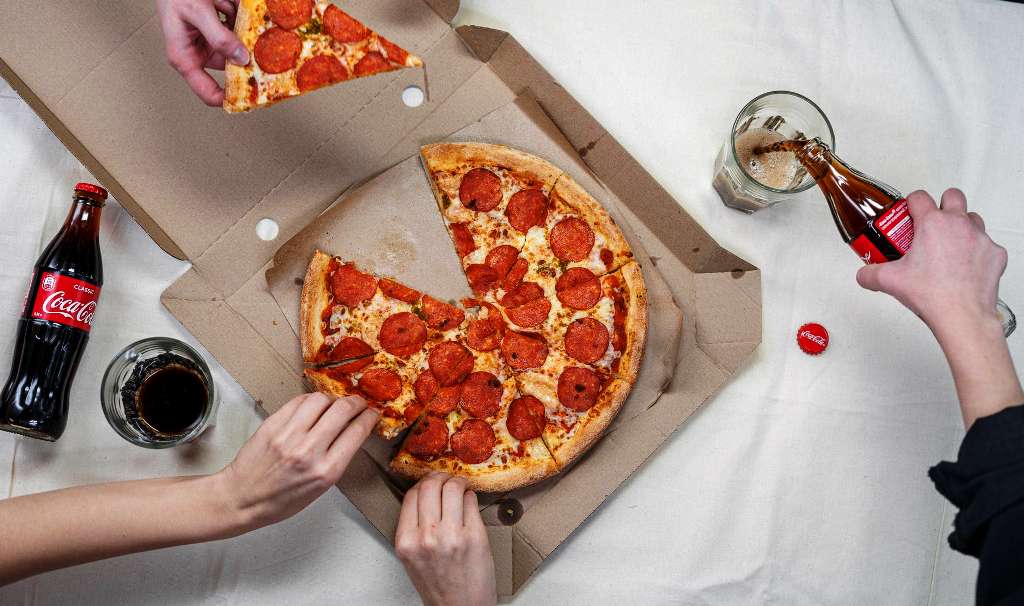By Vitaly Kuprenko
According to recent statistics, food delivery services are on the rise in the US and Canada. 44 percent of people order food via food delivery services at least once per month. That’s the reason why Uber Eats, Postmates, GrubHub, and other food delivery platforms are so popular among users.
 However, the development of the Uber Eats-like app is an intricate and complex project. In this post, we’ll discuss the development process of a food delivery platform and a revenue model for the app. Let’s roll.
However, the development of the Uber Eats-like app is an intricate and complex project. In this post, we’ll discuss the development process of a food delivery platform and a revenue model for the app. Let’s roll.
Types of food marketplaces
Two types of platforms occupy the main niche of food marketplace platforms. Let’s learn more about each of them.
Platforms for ordering meals
Ordering platforms display the closest food spots to the user. These platforms provide users with restaurant’s menu, rates, reviews, and other information.
This model is beneficial both for app owners, restaurateurs, and clients. The platform helps restaurant owners to expand their audience and find new distribution channels. As for the users, they can find a good place to eat without problems. Even though the platform doesn’t offer delivery services (the restaurant should use independent couriers), they still charge around a 10-15% fee to restaurants.
The algorithm is pretty simple:
- Users choose the place and food they want and make a payment
- The payment is registered in the app
- A cook gets the order and starts cooking
- When the food is ready, the courier gets the package
- When the meal reaches the end-customer, the restaurant gets the payment, and the app gets its share
Platforms like Otlob, Delivery Hero, and Zomato, are successful examples of this app model.
The main problem of this model is to establish a network of restaurants. It takes a lot of time for negotiation.

Food delivery platforms
Apart from platforms for ordering meals, this one takes over the logistics issues too. These platforms give an opportunity to small restaurants and food networks. In the restaurant business, newcomers often don’t have the finances to establish their own delivery network. That’s why they cooperate with food delivery platforms.
Here’s how it works:
- Users make an order and pay for it.
- The cook receives an order and starts preparation.
- When the order is ready to go, the courier on the part of the app receives a notification.
- The courier picks up the package and brings it to the client.
- When the delivery is finished, the restaurant gets the money, and the app gets its share.
These platforms charge up to a 30% fee for each order. Besides, customers pay extra for the delivery. Apps like Uber Eats, Swiggy, GrubHub, Postmates are popular examples of food delivery platforms.

Revenue Model
Let’s discuss some peculiarities of food delivery platforms’ revenue models.
Let’s take Uber Eats as an example. As for now, delivery rates depend on the travel distance (recently, the app had a fixed rate of $4,99). This grants the company a stable income source. However, it uses other strategies too.
The rates may rise if the order was made from a busy area. The area is considered busy if it has more orders than available couriers. In this way, the company ensures customers that they will get their orders on time, even when other delivery services are busy.
On top of that, the service charges a 30% fee. From a $50 order, the restaurant gets only $35. Besides, the restaurant or a particular meal can be promoted right in the app for an additional cost.

As you can see, the ways to make money with a food delivery platform are almost unlimited. Even though meal-ordering platforms have their benefits too, food delivery platforms are way more profitable.
Essential features for a food delivery platform
A food delivery app is divided into two parts:
- Customer app
- Courier app
Both of them are inseparable, so we should discuss each of them.
Must-have features for a customer app
Let’s take a look at all features that should be included in a customer app.
Registration and user profile
The sign-up page is the first thing users see when they enter the app. Make sure that the page is attractive, and the registration process is fast and painless.
After the registration, the user should be able to add the photo, payment details, and change the delivery address. Another convenient option is logging in with Facebook or Twitter.
Search
Search is part and parcel of a food delivery app. The search field with a range of filters will simplify the navigation between restaurants and preferred food types. Don’t forget to add the sort by price range.

Ordering
The ordering process should be smooth and simple so that customers don’t lose engagement before the payment. Create a cart and let users add all dishes in just several clicks. When users get the final bill, they should be able to specify important details and confirm payment details.
Additionally, take care of delivery options. Maybe the client can pick up the order personally.
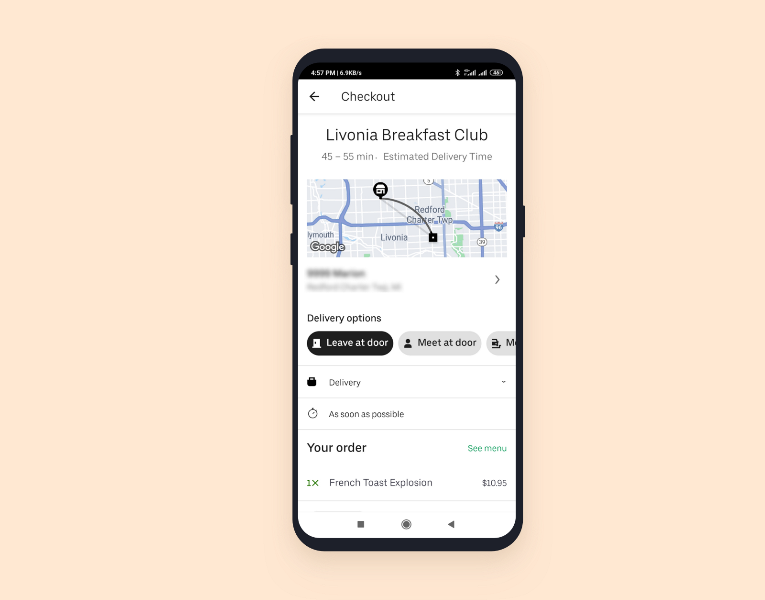
Payment details
The easiest way to integrate payments is to use PayPal or Stripe services. With these solutions, you won’t have a headache with security and performance issues.
On the other hand, you can create your own payment system. With this approach, you don’t have to pay fees to third-party services. However, a custom payment gateway obliges you to keep the data of your users. This means that you’ll have to comply with PCI DSS regulations. On top of that, with a custom payment solution, the cost of creating an app will skyrocket.
At first, there’s no need to add a wide range of payment options. Provide your users with 2-3 methods, and you’ll be good to go. Later on, you can add new methods if needed.
Order tracking
Tracking allows users to monitor the courier’s location on the map in real-time mode. Third-party APIs like Location API and CoreLocation framework can estimate an approximate delivery time and display couriers’ location.
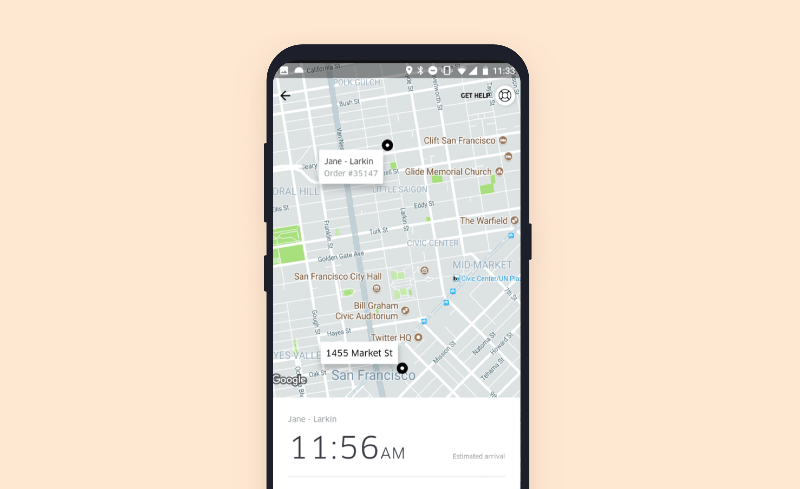
Ranking system
Let your users rate the restaurant and delivery services. The ranking system helps users to understand the quality of food in the restaurant. If the restaurant scores less than 2 out of 5, maybe, it should be removed from the list of your partners to save your platform’s reputation.

Must-have features for a courier app
Now, let’s take a closer look at the courier app.
Registration and profile management
This feature is the same thing as the one from the client app. Here couriers can manage their personal data and track recent deliveries.
Order management
After the registration, couriers get information about the nearest orders. To be able to accept, they need to press the ‘online’ button.
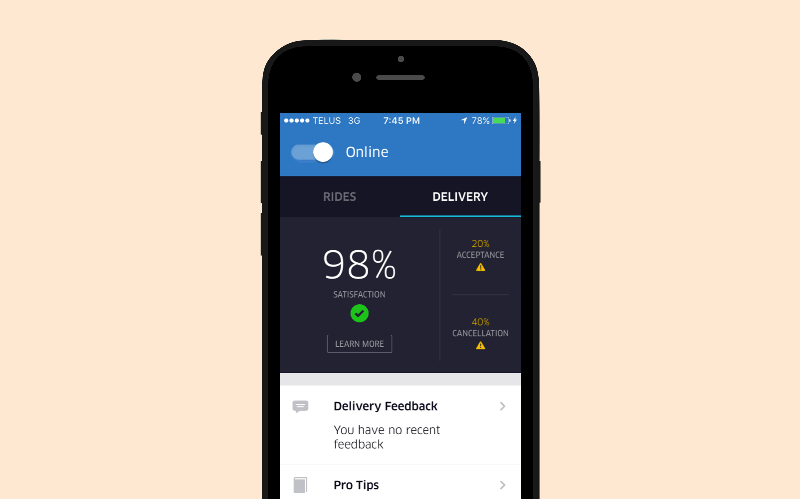
Status bar
For a better understanding of the order condition, couriers should update their statues. For example, when the order was accepted, the courier toggles ‘Accepted’ status. When the courier gets the meal, they toggle ‘Delivery in progress’ status. Once delivery is fulfilled, the system automatically removes the status.
Statistics
Here, couriers can track the number of orders they fulfilled and how much money they’ve made for a specific period of time.
Also, don’t forget about the admin panel for restaurants that allow owners to manage orders and payments and add or remove dishes from the menu.
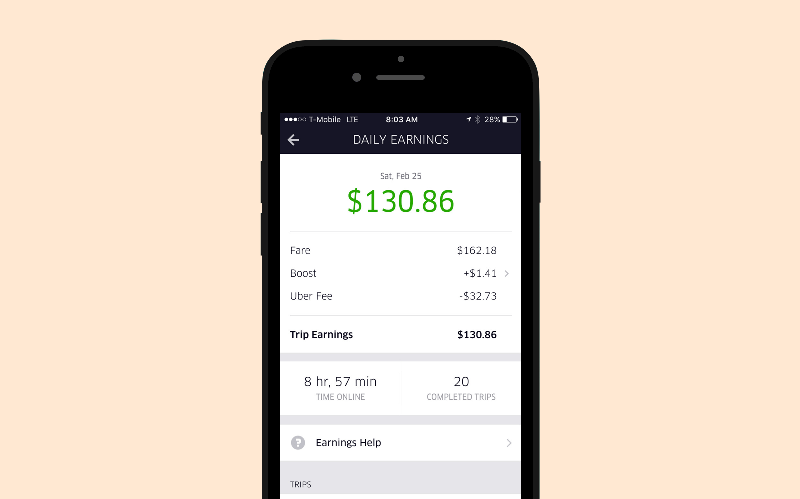
Wrapping Up
As you can see, a food delivery platform is a complicated project. It includes a ton of features that have no cone of perfection. Even though the food delivery app development is expensive, it pays off quickly with the right approach. However, to create worthwhile software, you should find an experienced software development company.
 About the Author
About the Author
Vitaly Kuprenko is a writer for Cleveroad. It’s a web and mobile app development company with headquarters in Ukraine. He enjoys writing about technology and digital marketing.














